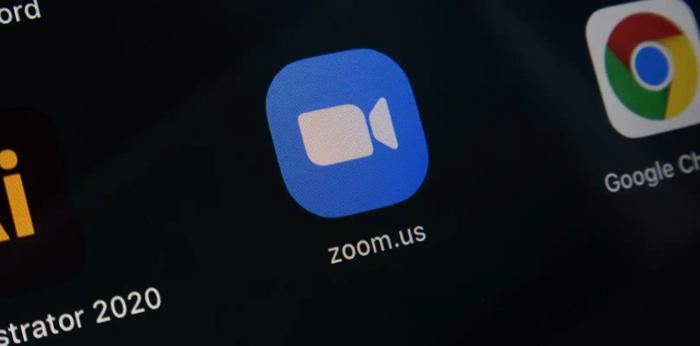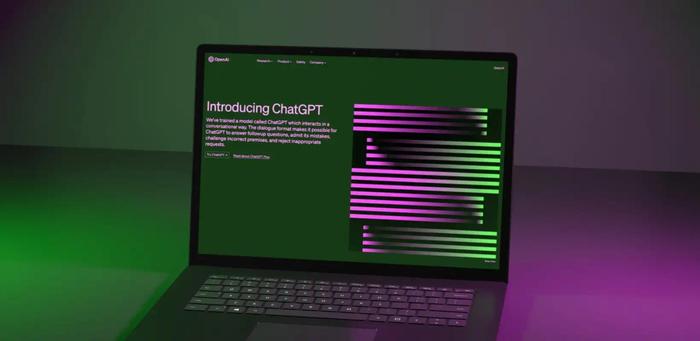Lengthy hiring processes are an expensive challenge for both recruiters and hiring managers. Vacant roles can have a negative effect on productivity and team morale, leading to higher costs and lower efficiency.
The longer it takes to hire, the higher the risk of losing potential candidates to competitors. As a result, savvy recruiters know that tracking and managing their time-to-hire is essential.
In this article, we'll take a closer look at the time-to-hire metric and offer practical steps to accelerate your hiring workflow.
Understanding time-to-hire
Time-to-hire measures the days between a candidate's application and their acceptance of the job offer.
The time-to-hire metric shows how swiftly an organization can identify, engage and secure new talent. A shorter time indicates a more efficient and agile recruitment process, enabling you to secure top talent before your competitors. Reducing your hire time also saves money and improves productivity.
While time-to-hire is an important HR metric, it's not the only one to consider. You need to understand the differences between these metrics as they each provide different insights into the recruitment process.
For example, time-to-fill measures the total time taken from when the job requisition is approved to the day the candidate accepts the job offer. This starts earlier than time-to-hire.
Time-to-fill helps you understand the overall efficiency of your hiring process. While time-to-hire focuses specifically on how fast you can identify the right candidate and get them on the job.
The true cost of a lengthy hiring process
A prolonged hiring process can have far-reaching consequences for any business. First up are the direct costs associated with advertising the job vacancy, conducting assessments and interviewing candidates.
According to the Society for Human Resource Management (SHRM), the average cost-per-hire is nearly $4,700. If you're planning on hiring an executive, that shoots up to over $28,000. Those costs only increase as the hiring process drags on, with additional expenses for extended advertising, temporary staff or overtime by existing employees.
There's also the cost to team productivity. Every day a position remains vacant is a day of lost output, which directly impacts an organization's bottom line.
Beyond the financial aspect, a high time-to-hire takes a mental toll on your existing employees. The additional workload from a prolonged job vacancy can increase stress, potentially resulting in burnout and lower job satisfaction. Left unchecked, this extra work will end up increasing your turnover rate, compounding the issues further.
A high time-to-hire affects customers and clients too. The ripple effect of a vacant position can disrupt your workflow, causing delays in project delivery. This can then potentially damage important client relationships.
In short, a lengthy hiring process can become an extremely expensive problem, one that you can't afford to ignore.
The power of proactive recruitment
Securing the right fit for a role is crucial. However, sitting around and waiting for the perfect candidate to come to you significantly extends your time-to-hire, especially in markets where there's a high demand for top talent.

One of the more effective solutions is proactive recruitment — this is the strategic approach of building relationships with potential candidates long before a position opens up. Here are some ways to take a more proactive approach to your recruitment and reduce time-to-hire.
Building talent pools
Talent pools are databases of potential candidates who have the skills and qualifications that align with your needs. By continuously expanding this pool, you can quickly identify and reach out to suitable candidates when a vacancy arises, reducing the time-to-hire.
Reach out to candidates who've previously applied for positions with your organization. Connect with them on LinkedIn or via email and let them know you're interested in keeping in touch for future opportunities. Industry conferences, workshops and networking events are all also great ways to meet potential candidates and add them to your talent pool.
Nurturing relationships
A full talent pool is of little use if you don't have meaningful relationships. Regular communication is essential. At a minimum, keep potential candidates up to date about what's going on in the company.
For better results, take that communication a step further and personalize your engagement — start actual two-way conversations and learn more about the person. What are their skills, their goals and their concerns?
Share relevant industry updates and advice to help them progress in their career journey. Building genuine relationships takes a bit of extra work, but it'll be far more valuable to the candidate and they'll be more likely to accept your offer.
Implementing employee referral programs
For both employers and candidates, trust plays a pivotal role in recruitment. While there's no shortcut to building trust, you can leverage existing relationships within your organization, effectively “borrowing” their trust.
Encourage your current employees to recommend qualified candidates from their network. Since these candidates are endorsed and have had a level of pre-screening (no employee is going to risk recommending a dud candidate and end up looking bad), you can spend less time on the assessment and reduce your time-to-hire.
Implement a structured, incentivized referral program for the best results. Let existing employees know what type of candidates you're looking for and how they can make a referral. Don't forget to offer meaningful rewards for successful referrals, such as a monetary bonus, extra vacation days or gift cards.
Fostering your business's brand
What comes to a candidate's mind when they hear your company's name? Enhancing your organization's image as a great place to work can attract high-caliber candidates. Use different channels such as your website, social media and employer review sites like Glassdoor to spread the word.
Focus on showcasing your company's culture, values and employee experiences. Authenticity is essential. Be transparent about what it's like to work at your company, highlight real employee stories and address negative reviews constructively.
Streamlining interviews and assessments
The interview and assessment phase is a critical step in the hiring process, offering a valuable opportunity to evaluate a candidate's suitability for a role. However, it can also be time-consuming, contributing to a longer time-to-hire.
Here are some ways to keep your interviewing process as efficient as possible while still identifying the best candidates.
Efficient scheduling
As with any kind of meeting, finding the right time for both parties can be incredibly frustrating. Use scheduling software, such as Doodle or Calendly, to coordinate availability between interviewers and candidates. These tools help to reduce stress and save time by eliminating that painful back-and-forth trying to agree on a day and time.

Consider scheduling your interviews on specific days of the week or month, batching them together. This helps the hiring team plan their time more effectively and can decrease the waiting time for candidates. Don't forget to send a reminder before the interview to reduce the chances of a no-show or needing to reschedule.
Structured interviews
Every candidate is different, but that doesn't mean your interviews should be. A consistent interview process means all candidates are assessed on the same criteria, reducing biases and ensuring a fair selection process.
Create a set of standard questions relevant to the role, with a scoring system for each question to objectively evaluate the responses. This makes it easier to compare candidates and enables you to make quicker hiring decisions.
Assessment tools
Modern assessment tools help you evaluate skills in different ways to get a more complete view of the candidate. For example, psychometric tests help you learn more about a person's aptitude, personality and abilities. Situational judgement tests (SJTs) allow you to see how a candidate makes decisions and reacts to different scenarios.
Choose assessments that are relevant to the role, such as coding tests for tech roles or personality tests for customer-facing roles. In many cases these assessments can be administered online, saving time and resources while providing you with objective data for your hiring decisions.
Embrace technology to streamline your hiring process
If you're still going through a stack of paper resumes or relying on handwritten notes, it's time to modernize your recruitment process. Here are some of the different ways software and apps can lower your time-to-hire.
Applicant tracking systems
Applicant tracking systems (ATS) enable businesses of all types and sizes to collect and organize candidate information. You can then quickly filter through candidates based on your designated criteria and qualifications for the role.
With the right ATS, you can automate a lot of the time-consuming recruitment tasks, such as job posting, pre-screening candidates and even sending offer letters. These systems help recruiters focus on the applicants most likely to be a good fit, dramatically reducing time-to-hire.
Customer relationship management software
While an ATS streamlines the hiring process, a customer relationship management (CRM) system helps maintain and nurture long-term relationships with potential candidates. By using a CRM as part of your proactive recruitment, you can create a consistent talent pipeline for future opportunities.
Capsule CRM comes with all the features you need to reduce your time-to-hire, helping you manage talent pools and filter potential candidates based on skill sets, experience and employment history. You can see a complete history of all your candidate interactions in one place, so you have all the information you need to make smarter hiring decisions.
Discover more about how a CRM for recruitment can optimize your hiring process.
Video interviewing platforms
We've all gotten used to using video conferencing software over the last few years, using apps like Zoom, Google Meet and Microsoft Teams to connect with friends and colleagues. These same tools can also be used to conduct online video interviews with potential candidates, saving time and resources. However, there are also dedicated video interviewing platforms, designed specifically to help recruiters and hiring managers.

Pre-recorded interviewing tools enable applicants to complete interviews asynchronously. Rather than having to schedule a call at a time that suits everyone, you can give candidates a list of predetermined questions to respond to. Anyone involved in the hiring process can then watch and review a recorded video of those responses in their own time.
Artificial intelligence
Artificial intelligence (AI) has been making a lot of headlines recently, as different companies try and find new ways to use generative AI tools in their business, including recruitment. For example, LinkedIn recently announced new tools with AI-enhanced features to speed up candidate discovery and maximize engagement.

These technologies can automate repetitive tasks, analyze large datasets to identify trends and even predict candidate success. By harnessing AI and machine learning, organizations can make more informed decisions and allocate resources more efficiently, ultimately reducing time-to-hire.
Conclusion
Reducing time-to-hire should be a top priority for any organization looking to build a competitive recruiting process — the costs and consequences of leaving roles vacant for extended periods are simply too high.
With a modernized and optimized hiring process, you'll be able to access top talent faster, deliver a standout candidate experience and ultimately drive greater business performance.
Discover how Capsule can help optimize recruitment and reduce time-to-hire. Enjoy a free starter package or start a 14-day free trial today.




